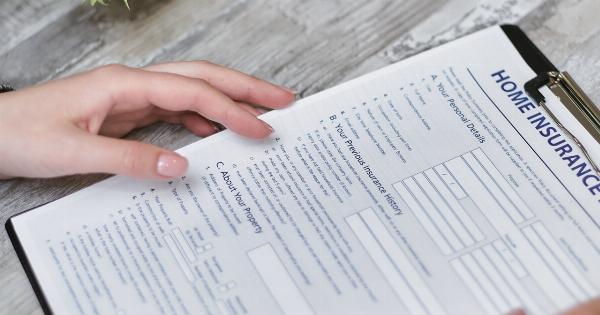Accidents happen. No matter how careful you are on the road, there is always a risk of being involved in a car accident. As a responsible driver, it is crucial to have insurance coverage to protect yourself and others.
In the event of an accident, insurance can provide the financial support you need to cover medical expenses, property damage, and other losses.
Understanding insurance coverage
Insurance coverage varies depending on the policy you have. It is important to know the details of your insurance coverage so that you are aware of what expenses are covered and what you may be responsible for. Here are a few key points to understand:.
1. Liability coverage
Liability coverage is the most basic form of auto insurance required by law in most states. This coverage helps pay for the other party’s injuries and property damage if you are at fault in an accident.
It does not cover your own injuries or property damage.
2. Collision coverage
Collision coverage is optional but highly recommended. It covers the cost of repairing or replacing your vehicle if it is damaged or totaled in an accident, regardless of who is at fault.
Without collision coverage, you may have to bear these expenses out of pocket.
3. Comprehensive coverage
Comprehensive coverage also optional, covers damages to your vehicle that occur outside of accidents. This includes theft, vandalism, weather-related damage, and more.
With comprehensive coverage, you can have peace of mind knowing that you are protected against a wide range of risks.
4. Medical payments coverage
Medical payments coverage, also known as MedPay, helps cover your medical expenses and those of your passengers regardless of fault. This coverage can be particularly useful if you do not have health insurance or have high deductibles and copayments.
What to do after an accident
Being involved in an accident can be a stressful experience, but it is important to remain calm and take the following steps:.
1. Assess the situation
Check yourself and others involved in the accident for injuries. If anyone is hurt, call an ambulance immediately. Safety should be your top priority.
2. Document the scene
Take photos of the accident scene, damage to vehicles, and any visible injuries. This documentation can be crucial when filing an insurance claim and can serve as evidence in case of any disputes.
3. Exchange information
Exchange contact and insurance information with the other driver(s) involved. This includes their name, phone number, address, and insurance company details. Cooperation and communication are vital.
4. Notify your insurance company
Report the accident to your insurance company as soon as possible. Provide them with all the necessary information, including the details of the accident, the other party involved, and any injuries or damages sustained.
Filing an insurance claim
When it comes to filing an insurance claim after an accident, the process may vary depending on your insurance company. However, here are the general steps involved:.
1. Contact your insurance company
Notify your insurance company of the accident and provide them with all the necessary details. They will guide you through the claims process and let you know what documentation they require.
2. Provide supporting documents
Submit any relevant documents such as the police report, medical bills, repair estimates, and photographs of the accident scene. These documents help strengthen your claim and demonstrate the extent of the damages.
3. Cooperate with the investigation
Your insurance company may conduct an investigation to determine fault and the extent of the damages. Cooperate fully with their requests for information and provide honest and accurate statements.
4. Receive compensation
If the claim is approved, your insurance company will provide you with compensation based on your policy coverage. This compensation can help cover medical expenses, property damage, rental car costs, and other related expenses.
Understanding the settlement process
The settlement process involves negotiating with the insurance company to reach a fair and reasonable compensation amount. Here are a few key points to keep in mind:.
1. Know your policy limits
Understand the maximum amount your policy covers for different types of damages. This will help you determine whether the settlement offer is fair or if you need to negotiate for a higher amount.
2. Document all expenses
Keep track of all expenses related to the accident, including medical bills, property damage costs, and any other financial losses. This documentation will help support your case during the negotiation process.
3. Consult with an attorney
If you are facing difficulties with the settlement process or believe you are not receiving adequate compensation, it may be helpful to consult with an attorney who specializes in personal injury and insurance claim cases.
They can provide guidance and ensure your rights are protected.
Conclusion
As an insured driver, understanding your insurance coverage and knowing what steps to take after an accident is essential. By being prepared and informed, you can navigate the compensation process confidently and ensure you receive the support you need.
Remember to prioritize your safety and well-being in the aftermath of an accident, and don’t hesitate to seek professional assistance if necessary.























